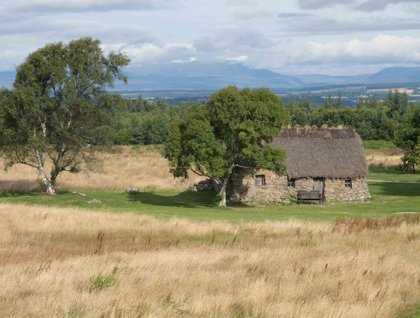We started today with a visit to Culloden, where Bonnie Prince Charlie and his troops were soundly defeated, some would say slaughtered, by the government troops on April 16, 1746. The government troops continued their campaign to eradicate all aspects of highland life. This included banning of the bagpipes and the wearing the tartan. This sad history was dramatically explained in the spectacular visitor center displays.
From there, we coached across the River Nairn to the prehistoric site called the Clava Cairns. Here 4,000 years ago, Neolithic people built two stone passage graves with entrances lining up with the setting winter solstice sun. A third rock cairn was a ring-type structure with no obvious entrance. A thousand years later, another group of people placed standing stones around these ancient cairns. Their purpose and the detailed lives of their builders remain a mystery.
Once back aboard Lord of the Glens, we set sail up the Caledonian Canal. Soon we entered the dark peaty waters of Loch Ness. But on this bright sunny day, no monster surfaced. Instead, Captain Jim Still brought the ship in close to the ruin of Urquhart Castle so that we could have good views and make good pictures.
Then it was time for our photo instructor Stewart Aitchison to give some pointers on using digital cameras. By the end of his talk, we were reaching the end of Loch Ness and approaching Fort Augustus and our next set of locks. The ship paused long enough at the bottom of the locks to let us disembark. Some went with expedition leader Steve Blamires or historian Konia Tack for informative walks around the village. Others explored Fort Augustus on their own.
In the late afternoon, a few intrepid souls went for a kayak tour along the canal. As we all returned to the ship for recap and dinner, a mist slowly enveloped the mountains and glen putting a fitting Scottish end to our day in sunshine.







